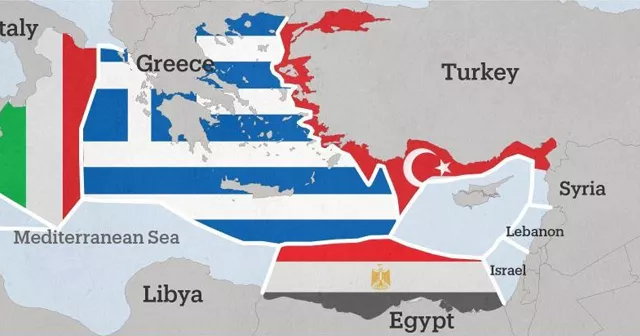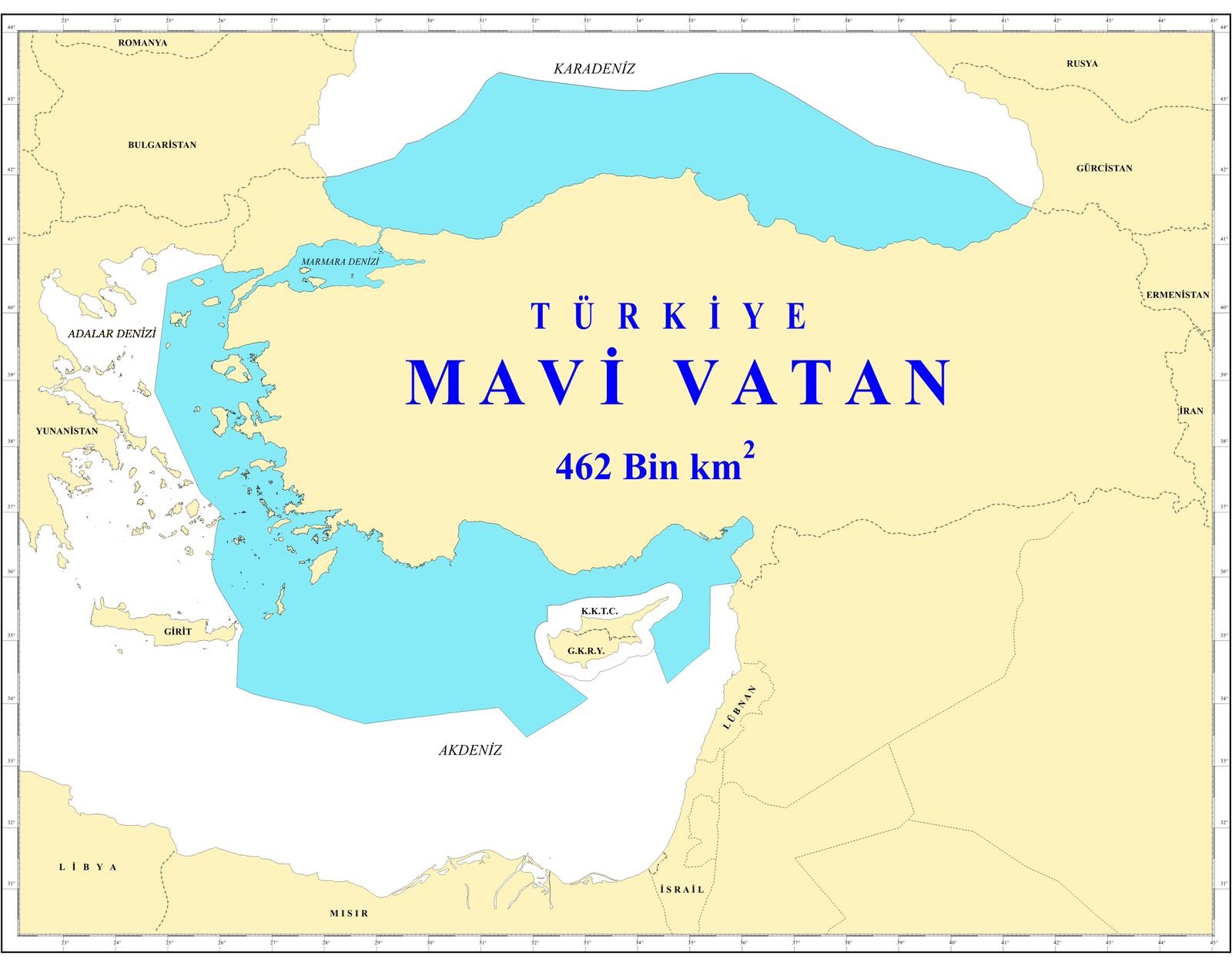Levent Kenez/Stockholm
A retired ultranationalist admiral, known as the architect of the Blue Homeland (Mavi Vatan), an aggressive naval doctrine identified with Turkish policy in the Mediterranean, claimed that Turkey had acted in accordance with the controversial Seville map, which supports Greek claims in the East. Mediterranean, with the aim of fostering better relations with the European Union since 2020.
During a YouTube broadcast on September 2, when asked about Turkey’s reduced activity in the Eastern Mediterranean compared to previous periods and the increased activity of other countries, retired Admiral Cihat Yaycı, who heads the Turkish Center for Maritime and Global Strategies, claimed that Turkey, as of December 22, 2020, had not entered the areas marked as Greek territorial waters on the map of Seville. Presenting a copy of the map, Yaycı claimed that Turkey had implicitly accepted it.
“…We did not recognize this card. I believe that from 2020 all our activities have been carried out within the limits of the Seville Map, possibly to foster good relations with the European Union and escape criticism from the EU,” he said. added.
Yaycı also pointed out that the only exception to the application of the Seville Map was in the territorial waters between Turkey and the Turkish Republic of Northern Cyprus (KKTC), a breakaway state recognized only by Turkey. He said this was made possible through an agreement signed between the two states.

Furthermore, Yaycı also mentioned that since December 22, 2020, Turkish NAVTEX notifications, specifically for drilling and seismic research vessels, officially touch the limits of the Seville map but do not extend beyond it.
When asked if Turkey has currently abandoned Blue Homeland, Yaycı replied that Turkey is not actively asserting its claims in areas falling under Blue Homeland. He reinforced this view by referring to the last known location of the Abdülhamit Han drillship. Furthermore, Yaycı stressed that Turkey cannot boast of not allowing other countries to enter the areas of the Eastern Mediterranean where it does not operate, as it is already at a disadvantage by not not using areas that rightfully belong to it.
The map of Seville is a study prepared at the request of the European Union by academics Juan Luis Suárez de Vivero and Juan Carlos Rodríguez Mateos of the University of Seville in the early 2000s. This is why it is called the Seville map.

It was drawn up to resolve a dispute over the issue of the Exclusive Economic Zone (EEZ) in the Eastern Mediterranean between Turkey, Greece and Cyprus.
This map demarcates the Greek continental shelf according to the borders of the Greek islands, regardless of their proximity to Turkey. According to the map, the continental shelf of Greece, starting from the island of Meis (Kastellorizo), extends south to the middle of the Mediterranean, leaving Turkey without access to the Mediterranean except for the Gulf of Antalya.
On September 21, 2020, the US Embassy in Ankara stressed that Washington refrains from taking positions on other countries’ maritime borders and stated that the Seville map has no legal significance from the US perspective .
“As to the “legal status” of the Seville Map, the United States does not consider the Seville Map to have any legal significance. We understand that the European Union does not consider the Seville Map to be a legally binding document,” the statement said.
The EU decided to impose sanctions on Turkey in 2019 due to its drilling and oil exploration activities in the Eastern Mediterranean. The sanctions were extended for another year and expired in November 2022.
Yaycı is one of President Recep Tayyip Erdogan’s close collaborators. He was with Erdogan during an unsuccessful coup attempt on July 15, 2016, and was heard whispering to Erdogan during the president’s televised speech on CNNTürk that evening. After the failed coup, Yaycı played a crucial role in purging Erdogan’s opponents and pro-NATO officers from the army. He is also the developer of software called “Fetometer,” used to identify members of the Gülen movement, a group critical of Erdogan.
Last month, Yaycı launched a campaign to obstruct the annual ritual of the Assumption of Mary, organized by the Ecumenical Patriarchate of Istanbul, which took place on August 15 at the Sümela Monastery in the northern province of Trabzon. -eastern Turkey.

On August 3, a tweet from the official account of Yaycı’s think tank contained derogatory remarks against Ecumenical Patriarch Bartholomew I, the spiritual leader of Eastern Orthodox Christians around the world, as well as claims that holding the The ceremony violated the Treaty of Lausanne, an international agreement signed in 1923 that defined borders and established peace between Turkey and allied powers, including Greece, after World War I.
Noting that August 15 commemorates the anniversary of the Ottoman conquest of Trabzon, the statement said the ceremony would be interpreted as disrespecting the country’s Ottoman ancestors. He claimed that the aim of the ritual was to either erase or cast doubt on the history of the conquest of Trabzon, thereby advancing the narrative that these lands originally belonged to Greece.
The statement further clarified: “The aim of this ceremony is to erase the memory of the conquest of Trabzon or, at the very least, to cast a shadow over it, thus promoting the ambitions of Megali Idea.”
The Megali Idea is a nationalist project aimed at creating a Greek state aligned with the ancient borders of the Byzantine Empire.
Despite strong reactions from ultranationalist and Islamist circles, the ceremony still took place.


